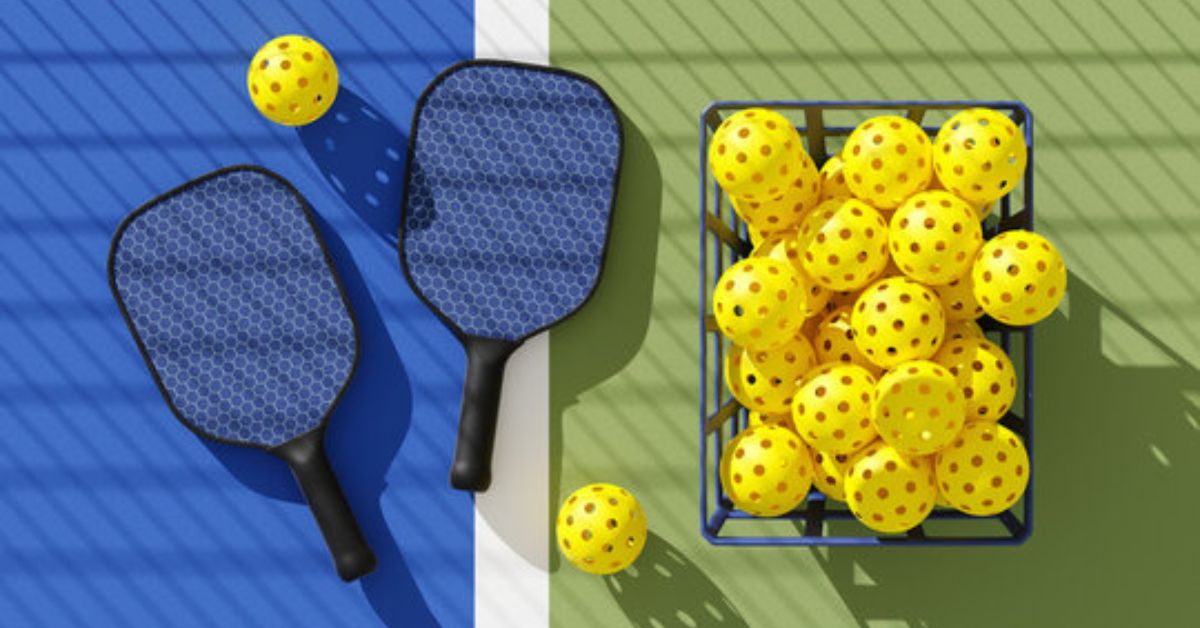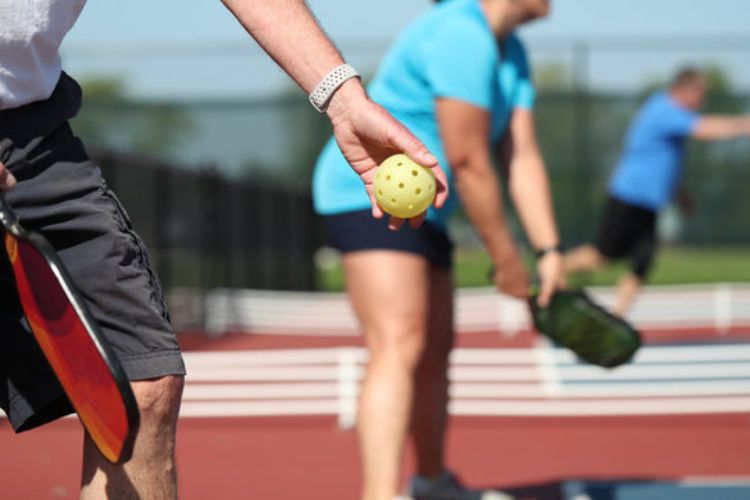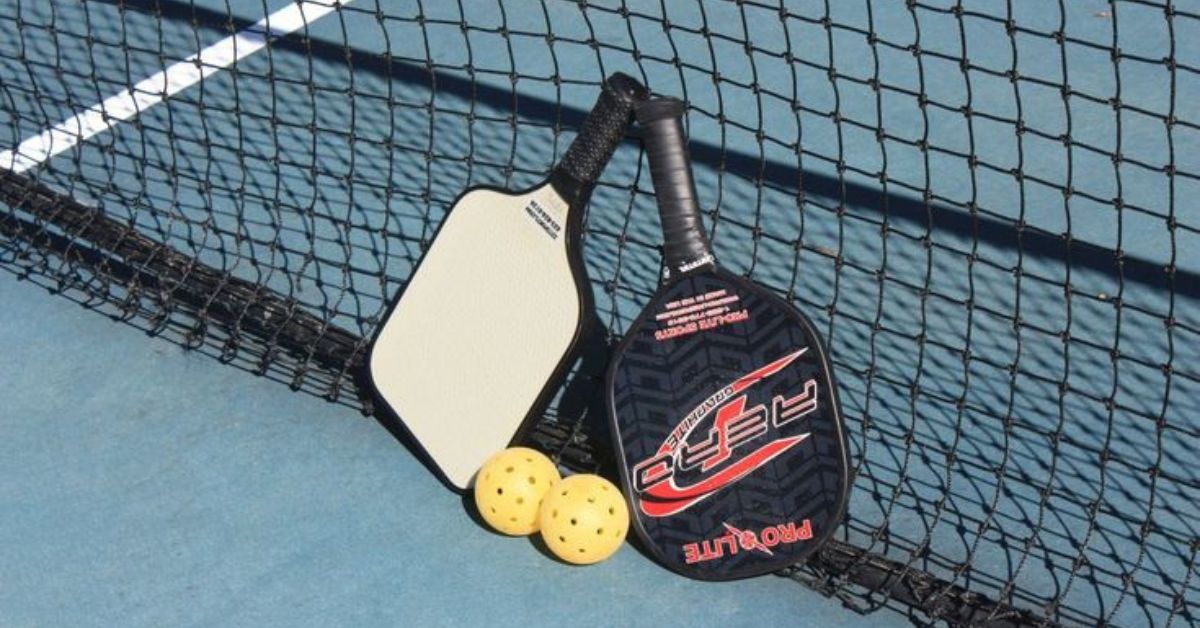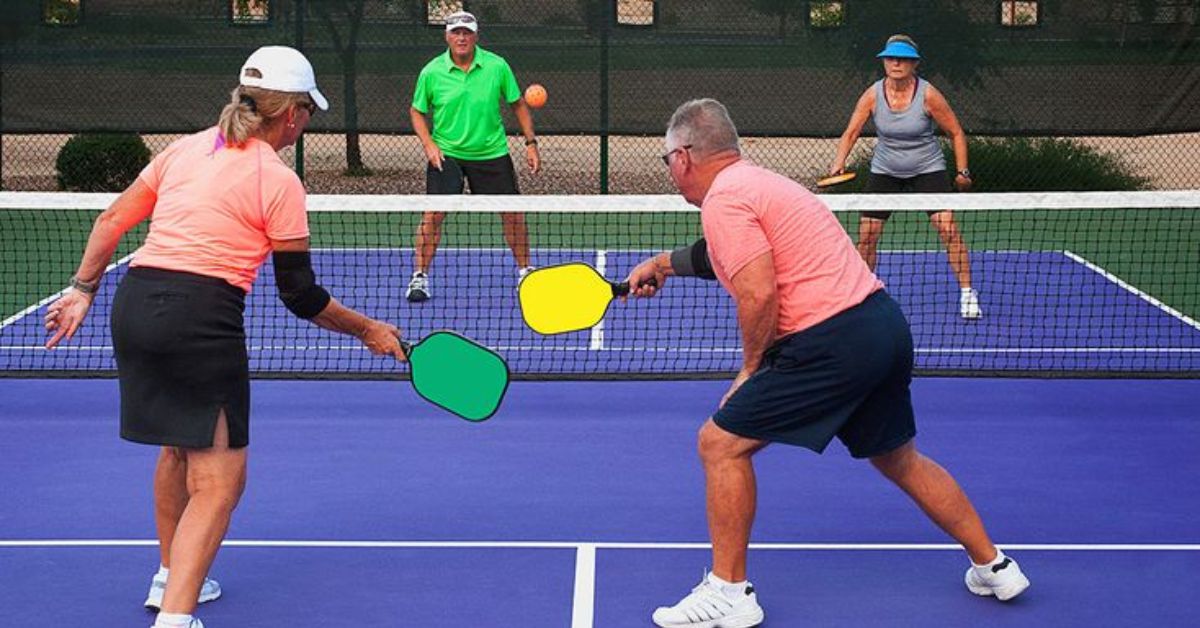You’ve pulled off serve, your footwork is sharp, and your reflexes are on point—so why does your game still feel off?
The answer might just be in your paddle.
In the world of pickleball, your paddle isn’t just a piece of gear. It’s your secret weapon. Picking the right material for the paddle is important to display a strong knock. But with so many materials like graphite, fiberglass, carbon fiber, and wood, which one is best suited for you? Each type of material has its own power, control, and feel in the court.
Let’s break down the pros and cons of each type, helping you find the perfect match for your playing style, skill level, and budget.
Why Does Pickleball Paddle Material Matter?

the pros and cons of each type, helping you find the perfect match for your playing style, skill level, and budget.
You might not find it necessary, but a pickle paddle material has a huge impact on your performance.
Your paddle isn’t just a piece of equipment—it’s an extension of your playstyle. The material affects:
- Power and control – Some materials absorb shock better, while others generate more speed. To learn how to take control and exercise power, you can either go with private pickleball lessons to start your journey as a beginner or hit the court on your own.
- Weight and maneuverability – Lighter materials help with quick reactions, while heavier ones add power.
- Durability – If you play often, you’ll want the most durable pickleball paddle to withstand wear and tear.
- Feel and comfort – The right material can increase the comfort level, making it easier for you to hit.
Let’s break down each paddle type to find out what is the best material for pickleball paddles?
Popular Core Materials in Paddles

Polymer (Polypropylene) Cores
Polymer has revolutionized the game. These honeycomb-structured cores have become the paddle material of choice for players who refuse to compromise.
Why You’ll Love It:
- Delivers “soft yet responsive” feel top players crave
- Creates the perfect sweet spot—forgiving enough for casual play, precise enough for tournaments
- Whisper-quiet on impact (no more dirty looks from neighboring courts)
- Delivers power when you need it, touch when you don’t
Why You Might Not:
- Quality polymer doesn’t come cheap
- Slightly heavier than some alternatives (though many players consider this a feature, not a bug)
Aluminum Cores

Remember flip phones? They worked great until something better came along. That’s aluminum core in a nutshell. This core is usually found in a paddle for beginners.
Why You’ll Love It:
- Very easy to switch from point to point
- Very deep in the pocket
- Fill up very little energy
- Last a long time
What You Probably Won’t:
- Pollution from noise
- Heavy fatigue for control
- More energy to strike
Nomex Cores
Nomex creates a core channeling lightning through your paddle, deriving its birth from the aeronautics specials.
Why You’ll Like It:
- Bursting forth into life to turn a whole professionalism switch when you’re defensive.
- Weightless yet as good as unbreakable.
- Shifting and shifting performance irrespective of temperature or humidity levels.
- Coupled with a sound specification that some players find extremely satisfying.
Why You May Not Like It:
- More racket pop than a teenager’s first apartment
- Everything is judged on a hit.
- The learning curve is steeper than even the black diamond ski slope.
Now that you have an understanding of all core materials, let us jump into the best pickleball paddle material to finally decide which one fits your requirements.
Wood Pickleball Paddles: The Classic Choice

Pros:
- Budget-friendly and great for beginners.
- Provides a solid, traditional feel.
- Extremely durable.
Cons:
- Heavier than other materials.
- Lacks finesse and control for advanced players.
Who should use it? Wood paddles are great for schools, community centers, and casual players looking for affordability.
How to Care for a Wood Paddle?
- Avoid moisture exposure to prevent warping.
- Store in a cool, dry place.
- Consider using a grip wrap for better comfort.
Though composite pickleball paddles are the most versatile at best, they in terms of external advantages, create turmoil in a few differences that they offer.
Pros:
- Power and control balance.
- Lightness makes them easy for an individual to handle.
- Textured surfaces for spin make ithemmost superb surfaces for controlling in the pickleball paddle.
Cons:
- Pricey, compared to wooden paddles.
- Durability differs based on quality.
- People who should use it: Intermediate players who like variety will appreciate the great combination of power and control found in composite paddles.
Hybrid Paddles

Hybrid paddles are a blend of materials. It gives the player extended power, strength, and speed. You can opt for a hybrid padded if you’re willing to understand better how paddles respond while hitting. These paddles are a perfect balance of control and power. Let’s take a look at some of its pros and cons.
Pros:
- Enjoy a blend of power, passion, and control
- Suit players of all levels
- Layered construction improves strength and paddle life
Cons:
- High cost
- Low lifespan
Composite Pickleball Paddle
Pros:
- Power-control balance.
- Easy to handle
- The textured surface makes it easier to spin.
Cons:
- More than the price of wood paddles.
- Not dura durable choice
- Who should use this: Good for the intermediate player who appreciates versatility and will be spurred on by a super combination of power and control from composite paddles.
Graphite Pickleball Paddles: The Choice Of Professionals

Pros:
- Super lightweight for quick responses.
- Superb control and precision.
- One of the best materials, if you’re looking for finesse and power
Cons:
- It can be expensive.
- Not as durable compared to wood or composite paddles.
Who should use it? Competitive and advanced players who need quick movement and pinpoint accuracy.
Why Graphite Paddles Are Popular?
- Offers an excellent touch responsive to finesse shots.
- Minimizes arm fatigue, which makes it great for long matches.
- It fits different playing styles, from aggressive to strategic.
Carbon Fiber Pickleball Paddles: The Newest Innovation
Pros:
- Strongest and most durable pickleball paddle material.
- Provides unmatched touch and control.
- The best surface for pickleball paddle performance is if you want consistency.
Cons:
- Expensive.
- Proper maintenance to increase its lifespan
Who should use it? Serious players who want top-tier performance and are willing to invest in high-quality gear.
How to Maintain a Carbon Fiber Paddle
- Keep it in a protective case when not in use.
- Clean with a microfiber cloth to avoid surface damage.
- Avoid dropping it to prevent structural weakness.
How To Choose The Best Pickleball Paddle Material?
Having multiple choices allows you to narrow down your preference. No need to stick to what type of paddles others are playing with when you want to charge and choose what’s best for you. Here’s a quick comparison based on skill level.
| Player Type | Best Paddle Material |
| Beginner | Wood or Composite |
| Intermediate | Composite or Graphite |
| Advanced/Competitive | Graphite or Carbon Fiber |
| Power Players | Composite or Carbon Fiber |
| Spin Masters | Graphite or Composite |
Pickleball paddle material can boost your performance. But having a complete pickleball paddle buying guide will help you finish the game in style!
What Are More Features You Should Look At?

When determining the paddle material, one must learn beyond the thickness. In this way, you will prepare for every situation.
Handle Grip
A thicker grip allows for more control for larger hands.
- Thinner grip allows for better wrist movement for extra spin and finesse shots.
Surface Texture
- Smooth surfaces generate less spin.
- Textured surfaces help with grip and spin control.
Price vs. Performance
- For budget players-wood or entry-level composite paddles would do.
- Mid-mid range price.
- High-end carbon fiber paddles are great to play with but costly.
Final Verdict
If you are an absolute beginner, some very reasonably priced wood or composite paddles will work quite well. As for intermediate players, a composite or graphite paddle provides better balance and precision. Advanced and competitive players should be using graphite or carbon fiber for maximum competition performance.
If you choose the right material for your pickleball paddle, your game will be applauded because every shot is a step closer to glory. So do proper homework for your pickleball paddle, hit the court, and enjoy every rally!





